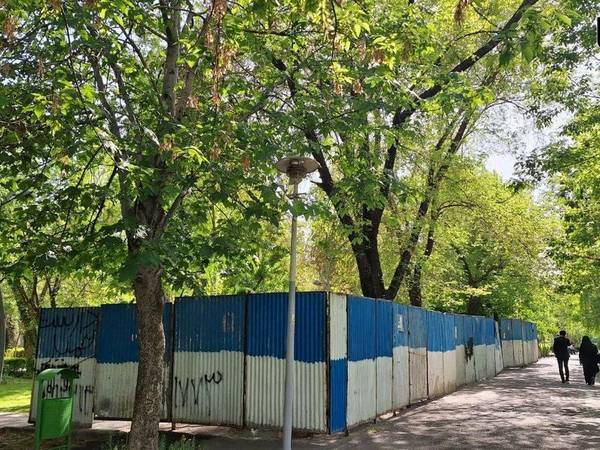Controversy is swirling around another public park in Iran’s capital as residents express outrage over the municipality's extensive fencing of Laleh Park in central Tehran.
This after Tehran's city council chairman and members disclosed plans for the construction of a cultural center within the park, one of the largest in Tehran, on Sunday.
Images circulating online showing the fenced areas, approximately 3,000 square meters in size, have intensified concerns about construction within this green space.
This plan follows another controversy sparked by plans to construct a mosque in Gheytarieh Park, a park in the north of the city.
Critics denounced that project as either a misuse of public funds or driven by hidden motives, including the expansion of Basij militia bases stationed at the parks.
Speaking to reporters this weekend about Laleh Park, Mehdi Chamran, chairman of the City Council of Tehran, defended the decision despite the area already being fenced off, with no official detailed information about the proposed building released so far.
Chamran cited a need for such projects post-Ramadan and assured that "no trees would be felled," arguing that people should wait for the presentation of the city’s plan.
Tehran City Council member Soudeh Najafi revealed she received informal information from the municipality about plans for a cultural center in the fenced area.
Expressing skepticism about the municipality's claims of having no role and no trees being cut, she questioned, "Does it mean that there are no trees in this large fenced area of about 3,000 meters?"
Echoing Nafafi's concerns, another city council member, Mahdi Eghrarian took to social media to voice his concerns, sharing a video and tagging Tehran's mayor and hardliner politician Alireza Zakani on the platform X, stating: "Noble people of Tehran: A group of colleagues of the council are against the marginal actions of Alireza Zakani and we will not allow the execution of trees in Laleh Park. It is wrong to build a cultural center at the cost of destroying trees and green spaces."
Some experts, including Mohammad Darvish, have also voiced concerns, citing potential illegality in altering the park's use.
The environmental expert told Rouydad24 news website that Tehran's per capita green space in parks and gardens falls short by about 4 square meters compared to the standard.
He argued for Tehran's dire need for green spaces, emphasizing the importance of maintaining current park areas. With only 16 square meters of green space per capita compared to the 25 square meters standard, any reduction in greenery would worsen the city's environmental and mental health challenges.
“This is illegal and under no circumstances should the people of Tehran, Iranian Department of Environment, Natural Resources Organization of Tehran City Council should not allow Tehran Municipality to make such a gross mistake,” Darwish said.
Legally only 3% of the area of parks can be changed for purposes such as toilets and cultural centers, and Laleh Park has reached capacity in this regard, he argued.
While Tehran’s municipality has claimed to have planted 636 hectares of trees within the city over 30 months, Darwish raised doubts about the figure – calling for transparency and verification of the claims.
With recent backing from figures such as Hassan Nowrozi, a member of Iran’s parliamentary legal and judicial commission, advocating for tree removal to facilitate mosque construction in parks like Gheytarieh Park, the future of Laleh Park hangs in uncertainty.
